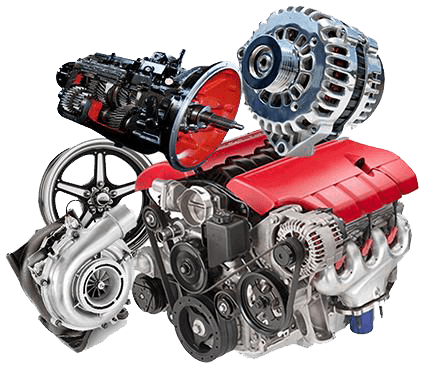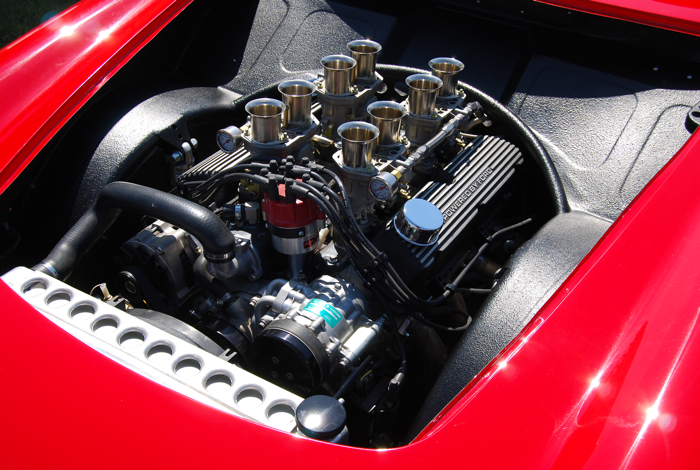Opel Corsa Engine: Everything You Required to Know Before Buying
Opel Corsa Engine: Everything You Required to Know Before Buying
Blog Article
Checking Out the Inner Functions of a Compact Lorry's Engine System
As chauffeurs, we frequently consider granted the intricate procedures that happen within the boundaries of our car's engine system. The portable yet intricate machinery that propels us forward is a wonder of design precision and control. From the controlled surges in the combustion chamber to the thorough timing of gas shot, every component plays an important role in the smooth operation of the engine. In this exploration of a small car's engine system, we will decipher the inner operations of this mechanical harmony, dropping light on the enigmas that drive us forward on our everyday journeys.
Combustion Process Review
The burning procedure in a compact automobile's engine system is a vital device that successfully transforms fuel right into power to power the lorry. This process takes place within the burning chamber of the engine, where fuel and air mix, fire up, and produce regulated explosions. The combustion procedure contains four major stages: intake, compression, power, and exhaust.
During the consumption stage, the piston relocates downward, reeling in a combination of air and gas right into the burning chamber. The next phase, compression, includes the piston relocating up, pressing the air-fuel combination to increase its strength. Ultimately, in the power stage, the trigger plug fires up the compressed mixture, resulting in a fast development of gases that requires the piston pull back. This down movement creates the power needed to drive the vehicle. Ultimately, in the exhaust phase, the burnt gases are gotten rid of from the burning chamber via the exhaust shutoff, preparing the chamber for the following cycle. This cyclic combustion procedure is basic to the procedure of a small car's engine system, making sure effective energy conversion for propulsion.
Piston and Cylinder Communication

The piston's exact fit within the cyndrical tube is necessary for maintaining optimal compression and preventing power loss during combustion. Tight clearances between the piston and cylinder walls guarantee effective securing, allowing the piston to relocate smoothly without enabling gases to leak past. Proper lubrication is likewise important to decrease friction and wear between these components, enhancing longevity and performance.
Furthermore, the design and products used in producing the piston and cyndrical tube influence engine efficiency and toughness. Modern engines often utilize lightweight yet sturdy materials like light weight aluminum alloys for pistons and cylinder linings to why not try here lower inertia and improve thermal performance. Generally, the unified interaction between the piston and cylinder is fundamental to the engine's functionality and overall efficiency.
Gas Injection System Capability
Fuel shot systems in compact vehicle engines play a critical duty in exactly delivering fuel to the burning chamber for regulated and effective ignition. The gas shot system operates by infusing gas into the combustion chamber at the optimum moment during the engine's procedure (opel corsa engine). This exact timing ensures that the fuel mixes equally with the air for correct burning, leading to boosted fuel effectiveness and lowered emissions
There are primarily two sorts of gas injection systems utilized in small automobile engines: port gas shot (PFI) and direct fuel injection (DFI) PFI systems infuse fuel into the intake port prior to the consumption valve, while DFI systems infuse gas directly right into the burning chamber. Both systems have their advantages, with DFI supplying better fuel atomization and PFI offering a more affordable remedy.
Understanding Engine Air Conditioning Devices
Efficient operation of a compact automobile's engine depends greatly on the performance of its cooling systems. Engine air conditioning is necessary to prevent overheating, which can result in major damages and decreased efficiency. The air conditioning system in a portable lorry normally is composed of several elements working together to manage the engine temperature level. One vital component is the radiator, which makes use of coolant to soak up heat from the engine. As the hot coolant moves through the radiator, it releases warmth into the air, cooling down prior to going back to the engine. The water pump flows the coolant with the engine and radiator, ensuring a constant circulation to control temperature. In addition, the thermostat assists manage the coolant circulation to keep ideal engine temperature. Some cars additionally have cooling down followers that activate when added cooling is required, such as throughout rush hour or warm climate. Comprehending these engine air conditioning systems is essential for preserving the performance and long life of a small vehicle's engine system.

Exhaust System Components Explained
The their website ideal functioning of a portable lorry's engine air conditioning devices depends on a corresponding system recognized as the exhaust system, which consists of various essential parts for making certain reliable emissions and engine performance. The exhaust manifold collects exhaust gases from the engine's courses and cylinders them to the catalytic converter.
One vital component of the exhaust about his system is the oxygen sensor, which checks the oxygen degrees in the exhaust gases to aid regulate gas consumption and guarantee optimum engine performance. opel corsa engine. Furthermore, the resonator might exist in some exhaust systems to reduce sound levels. In general, the exhaust system plays an essential role in keeping engine effectiveness, reducing hazardous exhausts, and making certain a quieter driving experience for compact car owners

Verdict
To conclude, the small lorry's engine system is an intricate combination of parts that work with each other to help with the burning procedure, transform fuel right into power, and eliminate waste gases. Comprehending the internal workings of the engine system, including the piston and cylinder communication, gas injection system, engine air conditioning systems, and exhaust system components, is essential for keeping optimum performance and performance of the vehicle.
The burning procedure in a small automobile's engine system is an important mechanism that efficiently transforms gas into power to power the car.Fuel injection systems in small lorry engines play a crucial role in specifically supplying fuel to the combustion chamber for controlled and effective ignition.There are largely two types of fuel injection systems used in compact automobile engines: port fuel injection (PFI) and direct fuel injection (DFI) Comprehending these engine air conditioning mechanisms is important for keeping the performance and durability of a small vehicle's engine system.
The optimum functioning of a small car's engine air conditioning devices depends on a corresponding system understood as the exhaust system, which consists of numerous necessary elements for guaranteeing effective discharges and engine performance.
Report this page